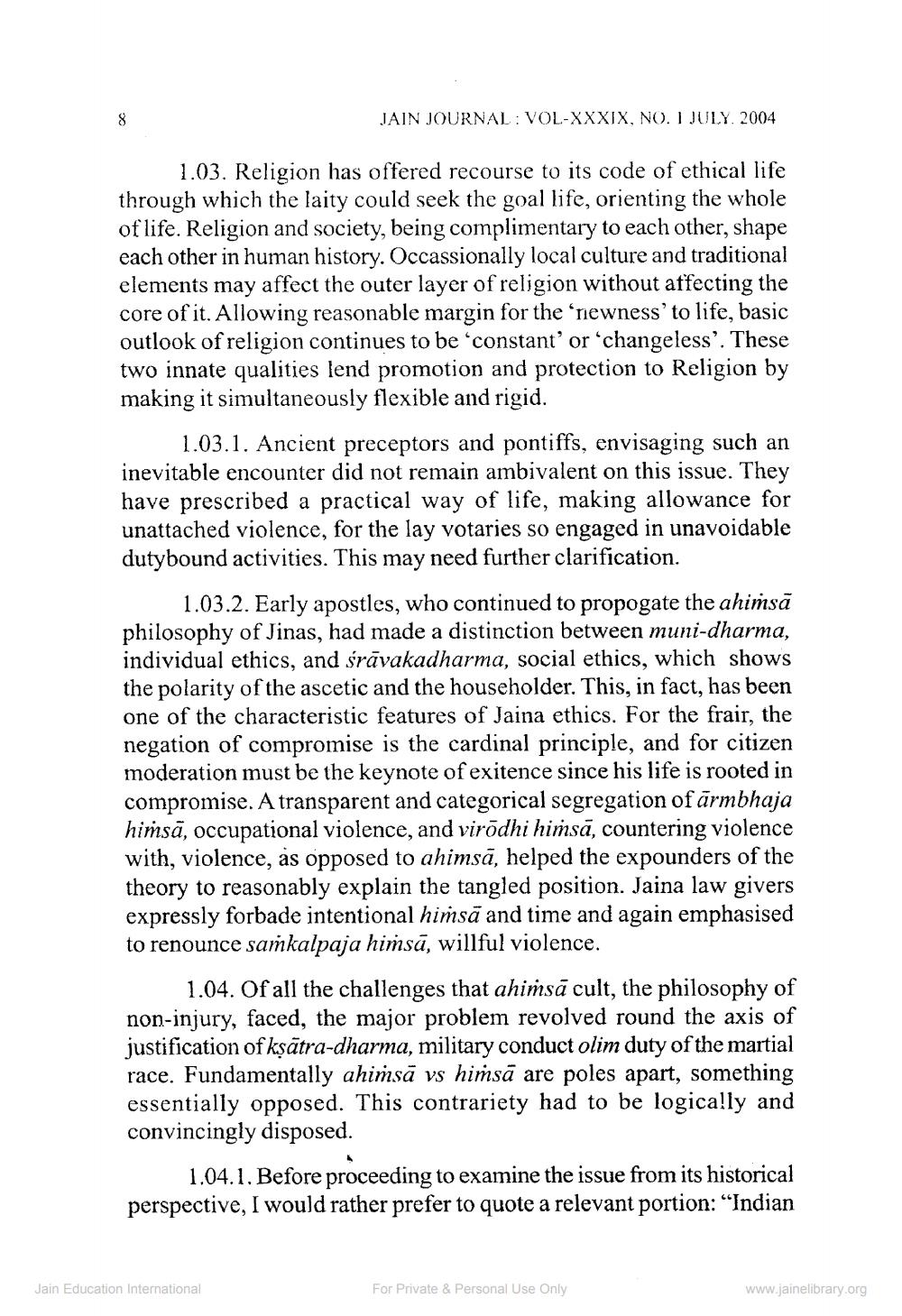Book Title: Jain Journal 2004 07 Author(s): Jain Bhawan Publication Publisher: Jain Bhawan Publication View full book textPage 7
________________ JAIN JOURNAL : VOL-XXXIX, NO. 1 JULY 2004 1.03. Religion has offered recourse to its code of ethical life through which the laity could seek the goal life, orienting the whole of life. Religion and society, being complimentary to each other, shape each other in human history. Occassionally local culture and traditional elements may affect the outer layer of religion without affecting the core of it. Allowing reasonable margin for the ‘niewness' to life, basic outlook of religion continues to be 'constant' or 'changeless'. These two innate qualities lend promotion and protection to Religion by making it simultaneously flexible and rigid. 1.03.1. Ancient preceptors and pontiffs, envisaging such an inevitable encounter did not remain ambivalent on this issue. They have prescribed a practical way of life, making allowance for unattached violence, for the lay votaries so engaged in unavoidable dutybound activities. This may need further clarification. 1.03.2. Early apostles, who continued to propogate the ahimsā philosophy of Jinas, had made a distinction between muni-dharma, individual ethics, and srāvakadharma, social ethics, which shows the polarity of the ascetic and the householder. This, in fact, has been one of the characteristic features of Jaina ethics. For the frair, the negation of compromise is the cardinal principle, and for citizen moderation must be the keynote of exitence since his life is rooted in compromise. A transparent and categorical segregation ofārmbhaja himsā, occupational violence, and virõdhi hiṁsā, countering violence with, violence, as opposed to ahimsā, helped the expounders of the theory to reasonably explain the tangled position. Jaina law givers expressly forbade intentional himsā and time and again emphasised to renounce saņkalpaja hiṁsā, willful violence. 1.04. Of all the challenges that ahimsā cult, the philosophy of non-injury, faced, the major problem revolved round the axis of justification of ksātra-dharma, military conduct olim duty of the martial race. Fundamentally ahiṁsā vs himsā are poles apart, something essentially opposed. This contrariety had to be logically and convincingly disposed. 1.04.1. Before proceeding to examine the issue from its historical perspective, I would rather prefer to quote a relevant portion: "Indian Jain Education International For Private & Personal Use Only www.jainelibrary.orgPage Navigation
1 ... 5 6 7 8 9 10 11 12 13 14 15 16 17 18 19 20 21 22 23 24 25 26 27 28 29 30 31 32 33 34 35 36 37 38 39 40 41 42 43 44 45 46
